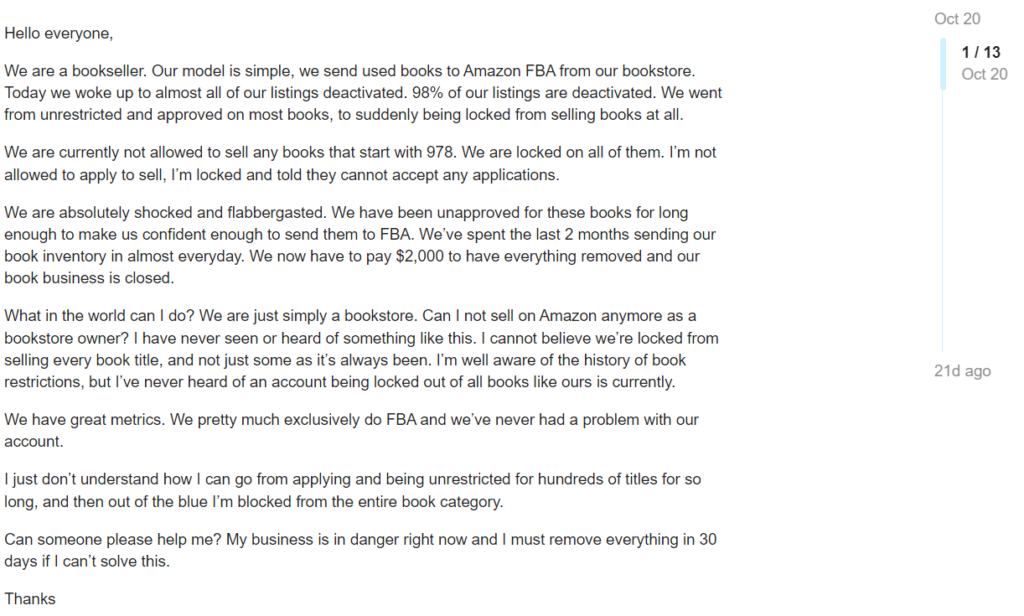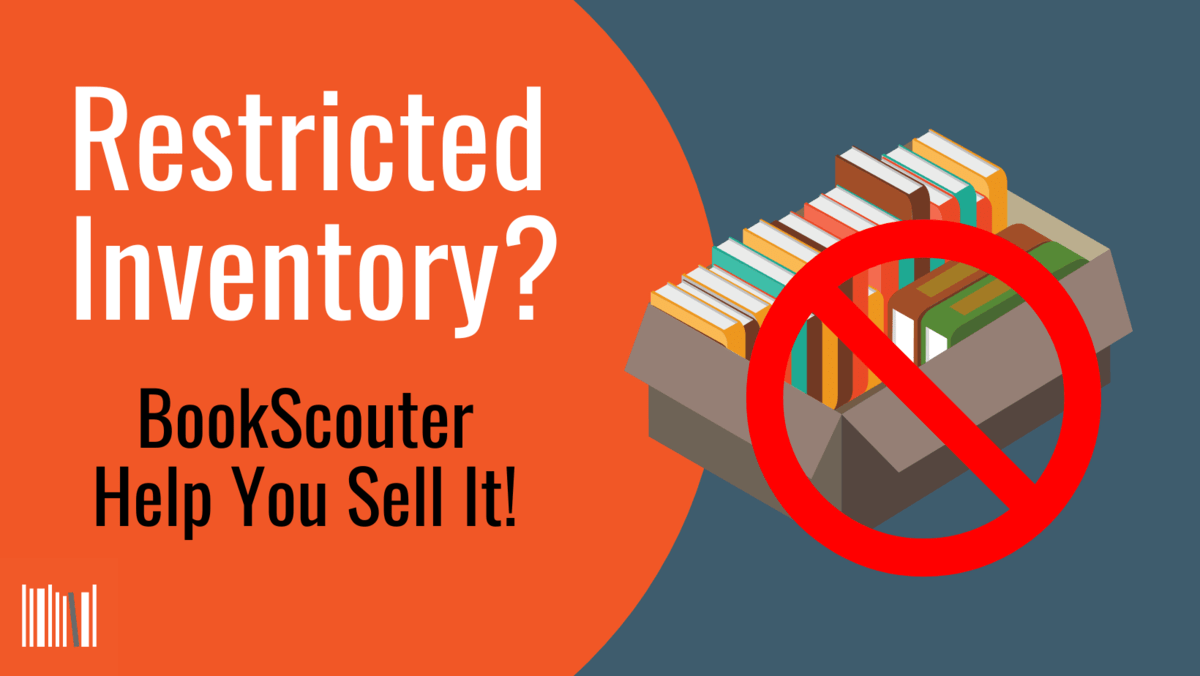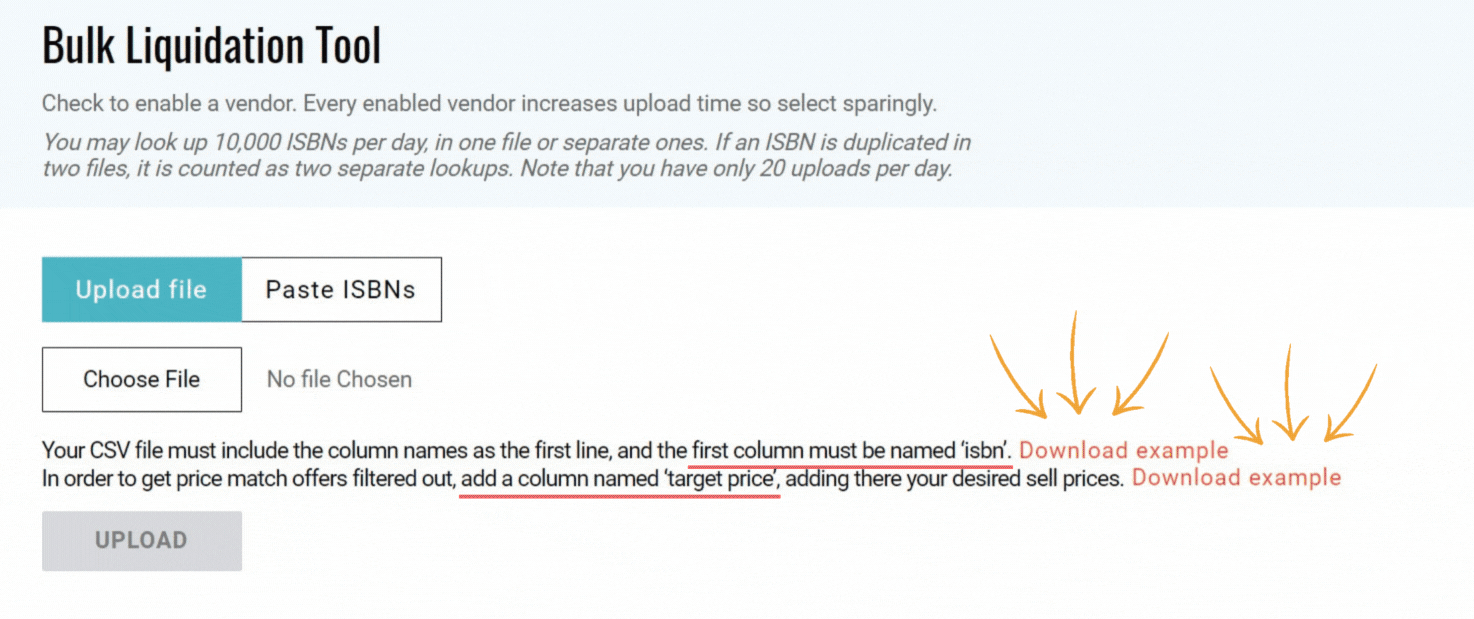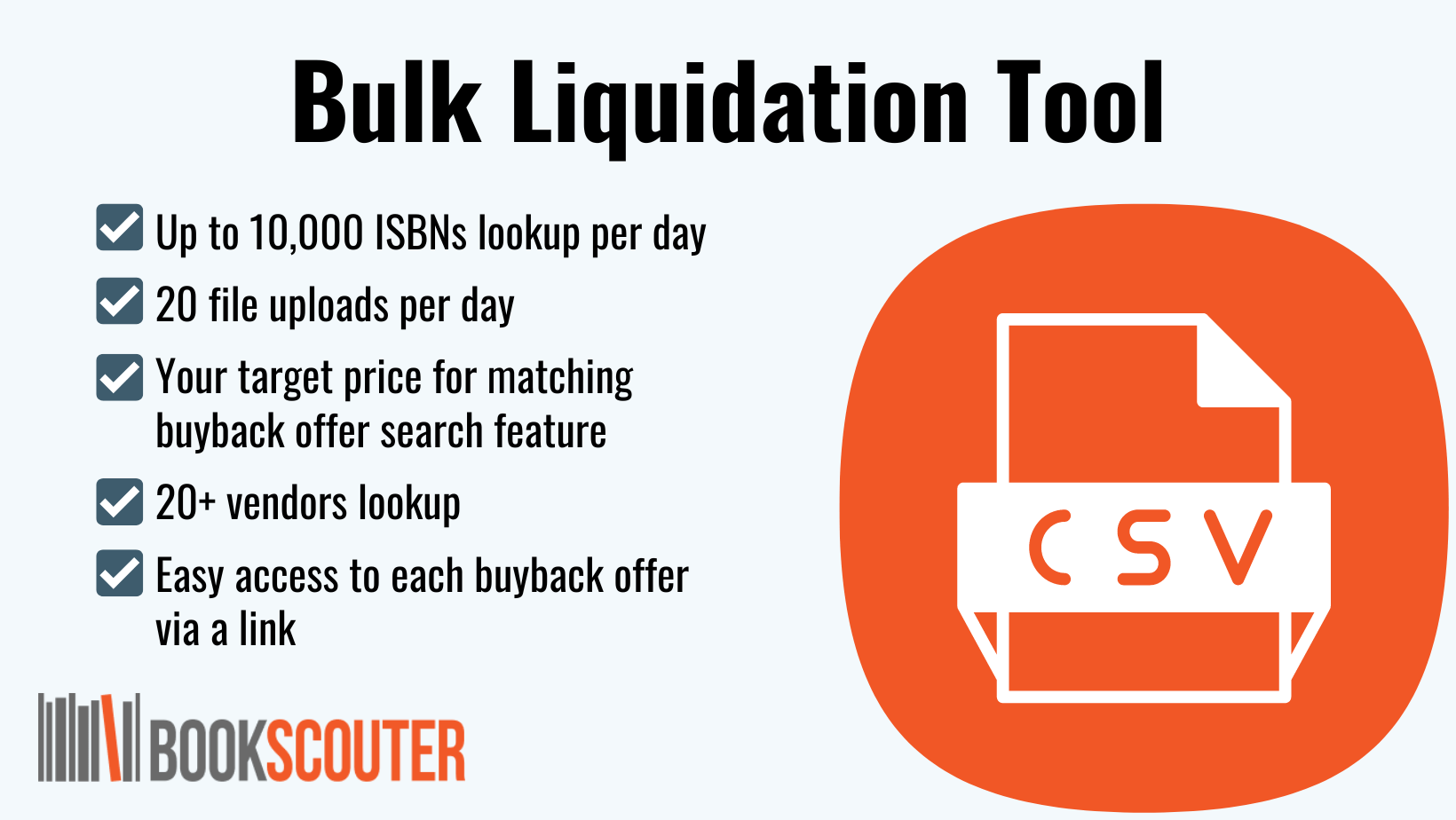
The Amazon Marketplace is a profitable venue for many booksellers. However, selling books on Amazon comes with strings attached. There are so many bottlenecks, and inventory management is one of the biggest problems each bookseller faces. Yet, regardless of how you sell on Amazon (FBM or FBA), it’s very important to handle your restricted and stranded inventory most effectively.
In this blog post, we’ll take a close look at the problem of restricted inventory from the bookseller’s point of view specifically and try to understand if there is a way to take full control over it.
- What Is Restricted (or Stranded) Inventory?
- Why Can Bookseller Inventory Gets Restricted?
- How Booksellers Handle Inactive Inventory Cases
- How to Deal with Inactive Inventory More Effectively?
What Is Restricted (or Stranded) Inventory?
To make things clear, let’s make a distinction between restricted and stranded inventory.
Amazon’s stranded inventory is the products received by Amazon, but they aren’t actively offered on the site. They are simply stored in a warehouse and are invisible to customers. There are many reasons why inventory gets stranded. Booksellers have cases of stranded inventory, too; however, it’s restricted inventory that causes more problems.
Restricted inventory is the products that cannot be listed or sold on Amazon because of Amazon’s policy regarding illegal, dangerous, or unauthorized products. Restricted inventory on Amazon acquires an inactive status. Customers can’t see it, and sellers can’t sell it. In bookselling, these listings are blocked or restricted by Amazon for various reasons, with counterfeit suspicion being the most common case. We’ll get back to it in more detail later.
Why Can Bookseller Inventory Gets Restricted?
There are more than 30 possible reasons why a listing gets stranded on Amazon (at various stages of the selling process)—in any category with any seller. There is also a range of reasons why book listings can get stranded. However, in this post, we’d like to focus on why they can get restricted.
Restricted ASINs
Restricted book inventory is the one that Amazon doesn’t allow to sell (potentially due to intellectual property violations, poor product quality, etc.). In the case of textbooks—because of the risk of receiving counterfeit copies.
- A bookseller can be restricted from selling specific textbooks because they are exceedingly popular and often counterfeited; therefore, Amazon removes such an option to prevent the risk immediately.
- A bookseller can be restricted from selling books because their account has already received a counterfeit claim (which potentially may even lead to account suspension; with Amazon, you never know).
First, Amazon wants to stay in control of the market; therefore, it changes its policy regarding what’s restricted and what’s not from time to time (e.g., there was a time when CD sellers found out that they were blocked from selling; Nike is now one of the brands with the “restricted” status on Amazon; textbooks restrictions have recently become more pronounced), so you can’t really expect or predict it.
Second, since Amazon gets a lot of pressure from textbook publishers (e.g., Cengage, Pearson Learning, and McGraw-Hill, to be specific), it doesn’t want any more problems (it has already been sued), so it’s implemented selling restrictions on a number textbook titles. Most commonly, restrictions are implemented on certain important textbooks (top-selling textbooks); however, fiction book titles can also get a restricted status.
Here is an example from the Amazon forum (a quite recent one from October 2022) where a bookseller complains about all their listings gone inactive. Mind that it’s just one example in a large pull of similar examples:

Professional booksellers and bookselling businesses frequently face this problem. It can never be predicted and comes as the most unpleasant surprise. Even if you learn in the process of making a pre-order that some books from the entire ISBN bulk list got block-listed, it’s really annoying, as you have to delete these listings and think about where else to sell the books.
In case some of the books got restricted after they had been shipped to Amazon, it’s another headache for a bookseller (check again the complaint mentioned earlier). Contacting support, requesting returns, and getting these returns back is often unprofitable and costs a lot; therefore, these books are left for Amazon to dispose of (most of the time). On average, booksellers may be restricted from selling as much as 15% of their inventory on Amazon.
How Booksellers Handle Inactive Inventory Cases
While booksellers can try to negotiate specific cases with the Amazon support team, it’s frequently ineffective and takes a lot of time. Besides, regardless of the situation, if a restriction was caused by counterfeit suspicion or a counterfeit claim, Amazon will never side with a seller. Amazon will always support a publisher, an author, or any party that initiated this specific ASIN restriction.
That is why most booksellers prefer to leave the books for Amazon to liquidate (if they’ve been shipped). If not, they try to find ways to sell or dispose of these books, which takes time and effort.
How to Deal with Inactive Inventory More Effectively?
Is there a way for booksellers to make the process of handling restricted inventory more efficient? There are several recommendations that can streamline inventory management and reduce the risk of listings being restricted on Amazon.
1. Diversify Your Selling Channels
Remember that you can get suspended from Amazon anytime for any reason. Therefore don’t sell on Amazon exclusively.
Besides, as we’ve already mentioned, Amazon constantly changes its policy from more lenient to more restrictive and back again, so you never know what you will wake up to tomorrow morning. Therefore, diversification is a universal tip. Though, it might be specifically useful to those booksellers who focus on Amazon only and neglect other online bookselling platforms (e.g., Abebooks, eBay, etc.)
Diversification as a risk management strategy is essential not only in investing but also in sales—the more marketplaces you use, the more chances you have to sell your books. Yet, there is a catch. To make sales on many platforms without putting forth a great deal of effort is a challenge, and using a multichannel inventory system isn’t an option available to every bookseller.
2. Get the Best of Your Inventory with the Bulk Liquidation Tool

At BookSouter, we want to be exceptionally useful to our customers; therefore, we’d like to offer an alternative—our Bulk Liquidation Tool. It won’t exactly serve as a replacement for a full-scale multichannel inventory system. However, it can become one of your most profitable diversification channels. We’ve recently updated the Bulk Liquidation Tool, and now you can get real-time buyback prices for your books as well as the buyback price information you specifically need. We suggest that you try using it to manage your inventory.
Why can it be an answer to all your prayers? You can use BookScouter Bulk Liquidation Tool to quickly find a way to sell the books that got restricted on Amazon to other vendors most conveniently. Alternatively, you can use the tool to check the best vendors and their offers—even before you list them on Amazon. Either way, the tool allows checking real-time buyback prices in bulk (up to 10,000 ISBNs per day), and if you want to sell your titles at a specific price, you can upload a list of ISNBs with the “target price” column and get only price-matched options.


 You can read more about how to use the tool and how you can sell your excess book inventory in our blog.
You can read more about how to use the tool and how you can sell your excess book inventory in our blog.
BookScouter Bulk Liquidation Tool is available as a part of our Pro subscription and will cost you $29.99 per month, but we guarantee that you’ll see results right away. With this tool, you’ll have one more selling channel, avoid risks related to Amazon’s rejection policy, manage your funds actively and get the fastest profit.
Final Thoughts
As a bookseller, you’ve probably tried a lot of different ways to manage your inventory with varying degrees of success. Since it’s never easy, and you can’t predict Amazon’s next move, we hope you try out our suggested tool and see the results for yourself.






